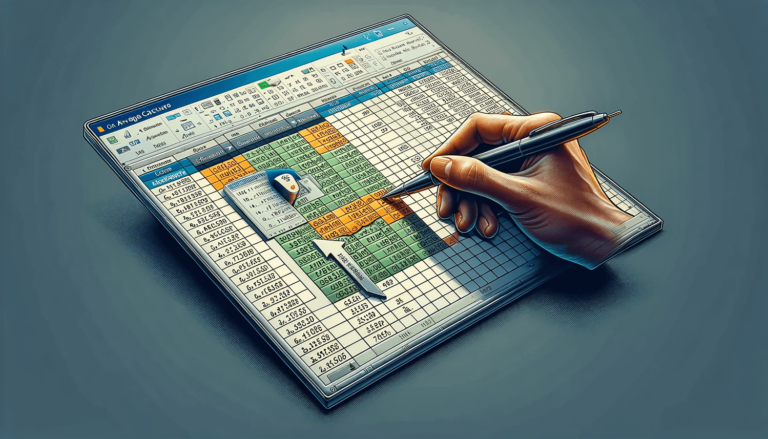5 Easy Ways to Calculate Averages Across Excel Sheets

Excel is an incredibly powerful tool for data analysis, and knowing how to effectively average data across multiple sheets can streamline your workflow. Whether you are compiling data from different departments, analyzing trends over time, or simply trying to summarize large datasets, calculating averages can provide valuable insights. In this comprehensive guide, we'll explore five easy methods to calculate averages across Excel sheets, enhancing your proficiency in data manipulation.
Method 1: Using the Consolidate Feature

Excel’s Consolidate feature allows you to combine data from multiple sheets into a single summary sheet, making it simple to calculate averages:
- Select the destination cell on your summary sheet where you want the average to appear.
- Go to the Data tab and click on Consolidate.
- In the Function dropdown, select Average.
- Click Add to select ranges from your source sheets. Ensure that you select the correct ranges across sheets where the data is consistent in format.
- Click OK, and Excel will calculate and display the average for the selected ranges.
🔎 Note: This method works best when the data layout across sheets is uniform, making the consolidation straightforward.
Method 2: 3D References

For data spread across sheets in a workbook, 3D references are a quick way to calculate averages:
- In the formula bar, type
=AVERAGE(Sheet1:Sheet3!B2)if you have data in cell B2 on each sheet from Sheet1 to Sheet3. - Press Enter, and Excel will compute the average of the values in B2 across those sheets.
- You can adjust the cell reference or the range of sheets as per your data organization.
📚 Note: Remember that 3D references require all sheets to have the same structure where the data is located.
Method 3: Using Helper Sheets

Create a helper sheet where you can compile data from all relevant sheets before calculating the average:
- Create a new sheet in your workbook to act as a helper sheet.
- Use functions like
=Sheet1!A1,=Sheet2!A1, etc., to pull data from other sheets into this helper sheet. - Once data is aggregated, use a standard
=AVERAGEfunction to calculate the average.
🔗 Note: This method is useful when dealing with varied data layouts across sheets, as you can manually adjust for missing or inconsistent data.
Method 4: Combining Functions with Array Formulas

Use array formulas in conjunction with functions like AVERAGEIF or AVERAGEIFS for more complex scenarios:
- Select the cell where you want the average to appear.
- Enter a formula like:
=AVERAGEIF(Sheet1:Sheet3!B:B,“>0”)to average all values greater than zero in column B across the sheets. - Press Ctrl+Shift+Enter to confirm it as an array formula (this will wrap your formula in curly braces {}).
🧮 Note: Array formulas can be powerful but also resource-intensive; use them for large datasets with caution.
Method 5: Power Query

Power Query provides an advanced solution for averaging data across sheets, especially when dealing with external data sources:
- From the Data tab, click on Get Data and select From Workbook.
- Import the relevant sheets or data from your workbook into Power Query Editor.
- Transform and combine your data as needed using Power Query’s tools, then use Group By or Append Queries to create a single table for averaging.
- Once transformed, load the data back into Excel for final calculations.
🔮 Note: Power Query is ideal for handling large datasets and complex transformations, but it has a learning curve.
In summarizing these methods, calculating averages across multiple Excel sheets can significantly enhance data analysis by providing a consolidated view of information. From simple consolidations to advanced Power Query transformations, Excel offers various tools suited to different data analysis needs. Each method has its place, depending on the size, structure, and complexity of your data, as well as your familiarity with Excel features.
Whether you're performing basic statistical summaries or conducting in-depth business analytics, these techniques ensure that you can efficiently manage and analyze your data with ease. By mastering these approaches, you not only become more proficient with Excel but also gain valuable insights that can drive better decision-making in your professional or personal projects.
Can I average data from non-adjacent sheets?

+
Yes, you can average data from non-adjacent sheets using methods like Consolidate or by pulling data into a helper sheet manually.
How do I handle empty cells when averaging across sheets?

+
Excel functions like AVERAGE automatically exclude empty cells. However, ensure your data range selection does not include blank rows or columns unintentionally.
Can Power Query handle data from different files?

+
Absolutely, Power Query can import and combine data from multiple Excel files, making it ideal for complex data analysis scenarios involving external sources.
What if my sheets have different structures?

+
Methods like helper sheets or array formulas might be more suitable. They allow you to manually align and adjust data before calculating averages.
Is there a performance impact when averaging large datasets?

+
Yes, especially with array formulas. Power Query can mitigate this by performing transformations and calculations outside of the Excel worksheet.